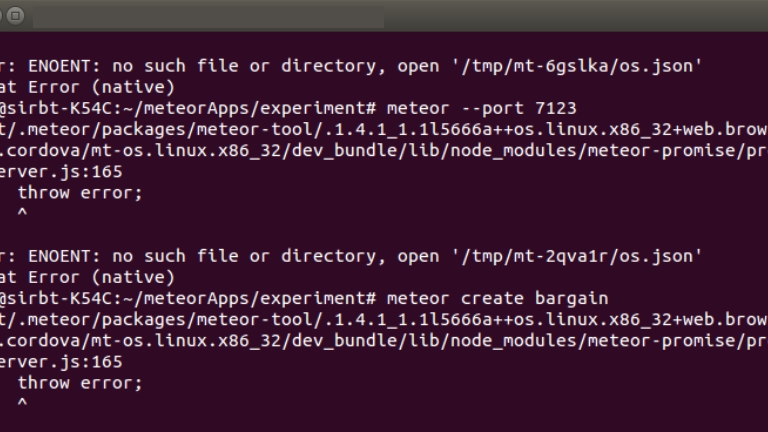If you work with computers, you’ve likely seen the “Enoent no such file or directory open” error message at some point.
This error message can be frustrating, especially if you don’t know what’s causing it or how to fix it.
In this article, we’ll explore what the “Enoent no such file or directory open” error message means, what causes it, and how to fix it.
We’ll also provide some tips for preventing this error from happening in the future.
What is the “Enoent no such file or directory open” Error?
The “Enoent no such file or directory open” error message indicates that a program or script is attempting to access a file or directory that does not exist.
Along with the error message, additional information such as the file path that the program attempted to access is often provided to help identify the source of the issue.
Causes of the “Enoent no such file or directory open” Error
Some of the most common causes of the “Enoent no such file or directory open” error message are:
Typo in File Path
One of the most frequent causes of the “Enoent no such file or directory open” error is a typographical error in the file path. For instance, if you mistakenly type “my-fie.txt” instead of “my-file.txt,” the program will fail to locate the file and will generate an error message.
Missing File or Directory
The “Enoent no such file or directory open” error can also be caused by a missing file or directory. If the program is searching for a file or directory that has been deleted or moved, it won’t be able to find it and will generate an error message.
This can happen if the file or directory was accidentally deleted, moved to a different location, or renamed without updating the program’s code.
Permission Issues
Sometimes, the “Enoent no such file or directory open” error can occur due to permission issues. For instance, if the file or directory that the program is trying to access has permissions that don’t allow the program to read or write to it, the program won’t be able to access it and will generate the error message.
How to Fix the “Enoent no such file or directory open” Error
Here are some general tips that can help you fix the “Enoent no such file or directory open” error:
Check the File Path
If you suspect that the error is caused by a typo in the file path, you should double-check the path to make sure it is correct.
This includes checking for spelling errors, typos, and any missing slashes or other characters that might be causing the error.
Verify the Existence of the File or Directory
If the error is caused by a missing file or directory, you can verify its existence by checking the file system or directory structure. If the file or directory exists, ensure that the file path in your program or script is pointing to the correct location.
If the file or directory doesn’t exist, you may need to create it or move it to the correct location. Make sure that the permissions are set correctly so that your program or script can access it.
Check File Permissions
If you suspect that the “Enoent no such file or directory open” error is being caused by permission issues, you can check the permissions on the file or directory that your program or script is trying to access.
Ensure that you have the appropriate read and write permissions to access the file or directory. You can use the “ls -l” command on Unix-based systems or the “icacls” command on Windows to view and modify file permissions.
If you’re unsure how to modify file permissions, consult the documentation for your operating system or contact your system administrator for assistance.
It’s important to note that changing file permissions can have security implications, so be cautious when modifying permissions.
Use Absolute Paths
Using absolute paths can help you avoid the “Enoent no such file or directory open” error. This is because absolute paths specify the exact location of the file or directory starting from the root directory, eliminating the possibility of relative path errors.
Tips for Preventing the “Enoent no such file or directory open” Error
To prevent the “Enoent no such file or directory open” error, you can:
Double-Check File Paths
It’s always a good practice to double-check file paths and ensure they are correct before running a program or script to avoid encountering the “Enoent no such file or directory open” error.
This can help save time and avoid frustration caused by having to debug the error later on.
Keep Track of File and Directory Names
Keeping track of file and directory names is important to avoid the “Enoent no such file or directory open” error.
This can include using a naming convention that is consistent and easy to understand, as well as keeping a record of any changes that have been made to the file or directory names.
This can help ensure that your program or script is always pointing to the correct file or directory location.
Use Relative Paths
Relative paths can be convenient when you want to refer to files or directories in a location relative to the current working directory.
However, it’s important to ensure that the relative path is correct and not dependent on external factors, such as the current working directory.
One way to do this is to use relative paths that are relative to a fixed point in the file system, such as the root directory, rather than relative to the current working directory.
This can help avoid errors if the working directory changes or if the script is run from a different location.
Conclusion
The “Enoent no such file or directory open” error can be quite bothersome, but it’s often a simple fix once you determine the root cause. Whether it’s a typo in the file path or a missing file or directory, troubleshooting the error is key to resolving the issue.
By adhering to the suggestions in this article, you can prevent the “Enoent no such file or directory open” error from happening and guarantee that your programs and scripts operate seamlessly.









